#CRM Integration Voice AI Platform
Explore tagged Tumblr posts
Text
How CRM Integration Voice AI Platform Transforms Customer Service Operations

The emergence of CRM Integration Voice AI Platform technology represents a paradigm shift in how organizations handle customer interactions, combining artificial intelligence with existing business systems for unprecedented efficiency.
The Power of CRM Integration Voice AI Platform in Modern Business
A CRM Integration Voice AI Platform eliminates the traditional barriers between customer communication and data management. Unlike standalone solutions, these platforms seamlessly connect with your existing Customer Relationship Management systems, creating a unified ecosystem where every customer interaction is automatically logged, analyzed, and acted upon.
The integration capability means businesses no longer need to choose between advanced AI functionality and workflow continuity. Instead, they can leverage intelligent voice agents that understand customer history, preferences, and previous interactions through direct CRM connectivity. https://precallai.com/
Key Benefits of Voice AI Platform CRM Integration
Automated Data Synchronization
When customers call, the CRM Integration Voice AI Platform instantly accesses their complete profile, including purchase history, previous support tickets, and communication preferences. This eliminates the frustrating "please hold while I pull up your account" experience that damages customer satisfaction.
Intelligent Call Routing
Advanced AI algorithms analyze customer data from your CRM to route calls to the most appropriate agents or departments. High-value customers automatically receive priority treatment, while routine inquiries are handled efficiently by AI agents.
Real-Time Analytics and Reporting
The platform generates comprehensive reports by combining voice interaction data with CRM metrics, providing insights into customer behavior patterns, agent performance, and operational efficiency that weren't previously possible.
Implementation Strategies for CRM Voice AI Integration
Successful deployment of a CRM Integration Voice AI Platform requires strategic planning. Organizations should begin by auditing their current CRM data quality, ensuring customer records are complete and standardized.
Next, businesses must define clear objectives for their voice AI implementation. Whether prioritizing cost reduction, improved customer satisfaction, or increased sales conversions, these goals will shape the platform configuration and integration approach.
Training becomes crucial during implementation. While the AI handles routine interactions, human agents need preparation for handling escalated cases and understanding how the integrated system enhances their capabilities rather than replacing them.
Measuring Success with Your Voice AI CRM Platform
Key performance indicators for CRM Integration Voice AI Platform success include first-call resolution rates, average handling time, customer satisfaction scores, and agent productivity metrics. The integrated nature of these platforms provides unprecedented visibility into these metrics.
Organizations typically observe significant improvements within 30-60 days of implementation. Reduced call volumes to human agents, faster issue resolution, and improved customer data accuracy become immediately apparent through CRM reporting dashboards.
Future of CRM Integration Voice AI Technology
The evolution of CRM Integration Voice AI Platform technology continues accelerating. Emerging capabilities include predictive analytics that anticipate customer needs, sentiment analysis that adjusts interaction approaches in real-time, and multilingual support that breaks down communication barriers.
Machine learning algorithms continuously improve by analyzing CRM data patterns, making each customer interaction more personalized and effective than the last. This creates a compounding effect where system performance improves over time without additional manual configuration.
Choosing the Right CRM Voice AI Integration Solution
When evaluating CRM Integration Voice AI Platform options, businesses should prioritize solutions offering native integrations with their existing CRM systems. Pre-built connectors reduce implementation complexity and ensure reliable data synchronization.
Security and compliance capabilities are non-negotiable, particularly for organizations handling sensitive customer information. Look for platforms maintaining SOC2, HIPAA, and GDPR compliance standards while providing encryption for all data transfers.
Scalability represents another critical factor. The chosen CRM Integration Voice AI Platform should accommodate business growth without requiring complete system overhauls or expensive upgrades.
Conclusion
The CRM Integration Voice AI Platform represents more than technological advancement—it's a strategic business transformation tool. By connecting intelligent voice capabilities with comprehensive customer data, organizations create seamless experiences that drive customer satisfaction while optimizing operational efficiency.
Success requires careful planning, proper implementation, and ongoing optimization. However, businesses embracing this technology position themselves at the forefront of customer service innovation, ready to meet evolving customer expectations while maintaining competitive advantages in their respective markets.
The question isn't whether to adopt CRM Integration Voice AI Platform technology, but how quickly organizations can implement these solutions to capture the significant benefits they offer.
#CRM Integration Voice AI Platform#Voice AI Platform#CRM Integration#Customer Service Operations#AI Voice Agents#Customer Relationship Management#Voice AI Technology#Customer Interactions#CRM Voice AI Integration#Automated Customer Service#Call Center AI#Customer Data Management#Real-Time Analytics#AI Call Routing#Customer Experience Platform#Business Process Automation#Voice Recognition CRM#Customer Support AI#Intelligent Voice Agents#CRM Data Synchronization
0 notes
Text
Top Digital Marketing Strategies for 2025

1. AI-Driven SEO & Content Marketing
Search engines are evolving, with AI-powered algorithms reshaping how content ranks. To maintain a competitive edge: ✅ Prioritise Experience, Expertise, Authority, and Trustworthiness (E-E-A-T) when creating content. ✅ Utilise AI-based tools like Jasper, SurferSEO, and Frase.io for content optimisation. ✅ Focus on long-form, informative content tailored to user intent. ✅ Implement structured data and schema markup to improve search visibility. ✅ Optimise for voice search and AI-generated responses to align with new search behaviours.
2. Hyper-Personalised Marketing

Consumers expect customised experiences across all digital platforms. To meet this demand: ✅ Use AI-powered customer relationship management (CRM) tools such as HubSpot, Klaviyo, and ActiveCampaign for audience segmentation. ✅ Personalise email campaigns with dynamic content and behaviour-based automation. ✅ Leverage Google Ads Performance Max and Meta’s AI-driven targeting for precise ad placements. ✅ Incorporate personalised product recommendations for eCommerce and digital shopfronts.
3. Short-Form & Interactive Video Content
Video remains a dominant force in digital marketing, particularly short, engaging formats: ✅ Create content for TikTok, Instagram Reels, and YouTube Shorts to capture audience attention quickly. ✅ Utilise AI-powered video creation platforms like Synthesia, RunwayML, and Pictory. ✅ Integrate interactive elements such as polls, quizzes, and live Q&A sessions to drive engagement. ✅ Experiment with immersive experiences like 360-degree videos and augmented reality (AR).
4. Performance-Driven Paid Advertising

Data-driven advertising is becoming smarter and more efficient: ✅ Use AI-powered Google and Meta Ads for automated bidding and precise targeting. ✅ Implement retargeting strategies to reconnect with past visitors. ✅ Leverage AI analytics to anticipate user behaviour and optimise conversion rates. ✅ Adopt programmatic advertising for automated, real-time ad placements.
5. Influencer & User-Generated Content (UGC) Marketing
Influencer marketing is shifting towards authenticity and community engagement: ✅ Partner with micro and nano influencers to achieve higher engagement at lower costs. ✅ Encourage UGC through branded challenges, reviews, and community hashtags. ✅ Use AI tools to evaluate influencer reach and engagement rates. ✅ Feature UGC across websites, social platforms, and email marketing for credibility.
6. Community & Conversational Marketing

Building digital communities fosters brand loyalty and customer retention: ✅ Engage with audiences on WhatsApp, Telegram, and Discord. ✅ Deploy AI chatbots for real-time customer interactions and automated lead nurturing. ✅ Host live events, such as webinars and Q&A sessions, to strengthen brand relationships. ✅ Implement SMS marketing and AI-driven chat to provide personalised communication.
7. Ethical & Sustainable Marketing
Consumers increasingly value sustainability and ethical business practices: ✅ Promote eco-friendly products and sustainable packaging in digital campaigns. ✅ Share corporate social responsibility (CSR) initiatives through storytelling. ✅ Adopt privacy-focused marketing strategies, including ethical data collection and zero-party data. ✅ Be transparent about sourcing, brand values, and business ethics.
8. Web3 & Blockchain in Marketing

Decentralised technologies are reshaping digital marketing strategies: ✅ Explore NFT-based loyalty programs to drive engagement. ✅ Utilise decentralised social media for better audience ownership. ✅ Implement blockchain for transparency in advertising and fraud prevention. ✅ Accept cryptocurrency payments for online services and eCommerce transactions.
9. AI-Powered Data Analytics & CRO
Data-driven decision-making enhances marketing performance: ✅ Use Google Analytics 4 (GA4), Hotjar, and Crazy Egg to analyse user behaviour. ✅ Conduct A/B testing on landing pages, emails, and ads for optimisation. ✅ Leverage predictive analytics to identify trends and customer preferences. ✅ Improve website UX and sales funnels to increase conversions.
10. Voice & Visual Search Optimisation

As voice and visual search continue to grow, businesses must adapt: ✅ Optimise content for natural language and voice search queries. ✅ Implement image and video search SEO using Google Lens and Pinterest Visual Search. ✅ Enhance accessibility with alt text, metadata, and structured product descriptions. ✅ Focus on multimedia-rich content to align with AI-driven search results.
🔥 Final Thoughts
To stay competitive in 2025, brands must embrace AI, automation, and data-driven strategies while maintaining an authentic connection with their audience. Businesses that leverage new technologies while prioritising customer experience will stand out in the evolving digital space.
📌 Read more insights at: 👉 check out
4 notes
·
View notes
Text
How AI Conversational Platforms Boost Lead Generation and Conversion Rates
AI-powered conversational platforms have become a necessity for marketers who need to create, connect, and convert leads in a short span of time. Since they can mimic the human touch and work 24/7, conversational platforms are changing the dynamics of how brands converse with prospects and how they close deals.

This is how they're making a positive impact.
Instant Engagement, Zero Wait Time
Today's customers need things in real time. AI-powered chatbot and voice assistants capture visitors the moment they land on a site and respond to questions, offer guidance, and stop drop-offs. That first interaction is usually the one that converts casual visitors into leads.
Qualifying Leads Automatically
AI platforms can be configured to pose intelligent, qualifying questions to identify a visitor's intent, budget, or timeline. This can be advantageous to businesses that focus on high-quality leads, it helps them to shorten response time and direct route prospects to the appropriate sales representative
Personalized Interactions That Convert
AI solutions scan user activity and adjust conversations to match. From recommending the appropriate product, providing a discount, or addressing a pain point, personalization builds trust and enhances conversion potential. This shows a customer that you remember small things about them, like their past purchase history and their likes and dislikes. This enables them to concentrate and sense more connected with your brand.
24/7 Lead Capture
Salespeople cannot work 24/7, but AI can. These sites capture leads 24/7, 7 days a week, across time zones, so you never miss a lead. This also helps to reach your customers on public holidays and weekends when your staff may not be working. This helps to boost your bottom line around the clock.
Seamless Integration with CRM Systems
New conversational platforms are natively connected with CRMs so that you can automatically log lead information, automate follow-up sequences, and track real-time conversion analytics.
Wrapping Up
AI conversation platforms are not chatbots, they're master lead generators. With real-time engagement, smart qualifications, and personalized experiences, they help businesses convert interest into action. For businesses looking to grow smartly, these tools not only keep the conversation alive but the conversions as well.
3 notes
·
View notes
Text
Role of AI and Automation in Modern CRM Software
Modern CRM systems are no longer just about storing contact information. Today, businesses expect their CRM to predict behavior, streamline communication, and drive efficiency — and that’s exactly what AI and automation bring to the table.

Here’s how AI and automation are transforming the CRM landscape:
1. Predictive Lead Scoring
Uses historical customer data to rank leads by conversion probability
Prioritizes outreach efforts based on buying signals
Reduces time spent on low-potential leads
Improves sales team performance and ROI
2. Smart Sales Forecasting
Analyzes trends, seasonality, and deal history to forecast revenue
Updates projections in real-time based on new data
Helps sales managers set realistic targets and resource plans
Supports dynamic pipeline adjustments
3. Automated Customer Support
AI-powered chatbots handle FAQs and common issues 24/7
Sentiment analysis flags negative interactions for human follow-up
Automated ticket routing ensures faster resolution
Reduces support workload and boosts satisfaction
4. Personalized Customer Journeys
Machine learning tailors emails, offers, and messages per user behavior
Automation triggers based on milestones or inactivity
Custom workflows guide users through onboarding, upgrades, or renewals
Improves customer engagement and retention
5. Data Cleanup and Enrichment
AI tools detect duplicate records and outdated info
Automatically update fields from verified external sources
Maintains a clean, high-quality CRM database
Supports better segmentation and targeting
6. Workflow Automation Across Departments
Automates repetitive tasks like task assignments, follow-ups, and alerts
Links CRM actions with ERP, HR, or ticketing systems
Keeps all teams aligned without manual intervention
Custom CRM solutions can integrate automation tailored to your exact process
7. Voice and Natural Language Processing (NLP)
Transcribes sales calls and highlights key insights
Enables voice-driven commands within CRM platforms
Extracts data from emails or chat for automatic entry
Enhances productivity for on-the-go users
#AICRM#AutomationInCRM#CRMSolutions#SmartCRM#CRMDevelopment#AIinBusiness#TechDrivenSales#CustomerSupportAutomation#CRMIntegration#DigitalCRM
2 notes
·
View notes
Text
Automotive AI: Revolutionizing Dealership Operations with BDC.ai

1. What Is Automotive AI?
Automotive AI refers to the use of artificial intelligence technologies—like voice bots, chat automation, CRM integration, predictive analytics, and appointment automation—to enhance automotive dealership operations. It transforms reactive, manual processes into proactive, data-driven systems.
BDC.ai, recognized as “The #1 Trusted AI BDC for Dealerships,” exemplifies this shift. Its platform engages with leads within one minute via phone calls, SMS, and email, operating 24/7/365. AI agents qualify prospects, schedule appointments, update CRM systems, and hot-transfer qualified leads to staff—while providing performance analytics .
2. Why Automotive AI Is Critical for Today’s Dealerships
Speed Drives Engagement Responding within five minutes can increase contact rates by 100×, yet only about 10% of dealerships manage this manually Automotive AI ensures sub-1-minute responses, keeping prospects engaged at the moment of interest.
24/7 Availability AI operates non-stop, covering late nights, weekends, and holidays—ensuring no lead or service request is missed
Personalization at Scale By accessing CRM data—customer names, vehicle interest, service history—AI delivers personalized interactions, making automation feel authentic
Efficient Human Handoffs When buying intent is detected, AI smoothly hot-transfers leads to live agents, preserving conversational momentum and context
3. Core Capabilities of BDC.ai’s Platform
FeatureBenefit🚀 Sub‑1‑Minute Multichannel ResponseVoice, SMS, or email outreach keeps leads hot Voice‑Enabled AI ConversationsNatural phone dialogue beyond chatbots 24/7/365 OperationAlways-on lead handling CRM & Calendar SyncAutomated logging and scheduling Smart Hot TransfersSeamless handoffs to staff Lead Source AnalyticsTrack ROI by channel Predictive Lead PrioritizationFocus staff on highest-intent leads
4. Proven Impacts of Automotive AI
Dealerships using AI through tools like BDC.ai report striking improvements:
30–50% faster lead response times
20–35% higher appointment show rates
15–25% increased sales conversions
~40% reduction in manual follow-ups
These gains lead to more showroom visits, better ROI, and streamlined operations.
5. The Voice AI Advantage
Voice is still the preferred channel for customers. Yet, 32% of dealership calls go unanswered, and 35% of callers disconnect due to wait times
Voice AI provided by BDC.ai:
Answers instantly, every time
Detects intent and qualifies leads conversationally
Routes qualified leads to agents
Costs around $0.01/minute, dramatically undercutting staffing models cardealer-
Additionally, voice AI manages appointment scheduling, reminders, cancellations, and rescheduling—optimizing workflow and bay utilization
6. Beyond Lead Handling: AI Across Dealership Operations
Automated Follow-Ups AI keeps leads warm via sequence-based channels at optimal timings
Predictive Service Outreach Based on mileage or telematics, customers receive proactive reminders to book service, boosting retention
Inventory Management AI analyzes sales trends to help dealers stock more of what sells and price strategically .
Virtual Showrooms & AR/VR Demos Digital experiences can engage customers remotely and guide them to appointments .
AI-Backed Agent Coaching Real-time analytics help advisors improve messaging and outcomes during live calls
7. Mitigating the “Too Robotic” Concern
Some dealers worry AI feels inauthentic. One Reddit user warned:
“Feels extremely scripted or robotic… best suited for big-name dealers…”
To avoid this:
Use CRM-based scripts for personalization
Employ hybrid models where staff takes over at key moments
Hot-transfers should trigger as soon as the conversation deepens
When done right, AI enhances—not replaces—human connection.
8. Best Practices for Adopting Automotive AI
Set Clear KPIs – aim for sub-minute response and higher show rates
Choose a Comprehensive Platform – voice, analytics, CRM sync (e.g. BDC.ai)
Deeply Integrate Systems – CRM, service calendar, marketing tools
Customize Voice & Messaging – align tone with brand
Pilot Smartly – start with after-hours or overflow inquiries
Monitor Continuously – measure response, appointment, conversion, ROI
Train Staff for Handoffs – ensure a smooth AI-human transition
Automotive AI—as delivered by platforms like BDC.ai—is rewriting the playbook for dealerships. If you want quicker responses, more personal outreach, seamless scheduling, and smarter sales performance—all while supporting staff—this technology is a game-changer.
AI isn’t replacing your team. It’s empowering them to work smarter, engage better, and drive results. Schedule a demo with BDC.ai, try a pilot, and shift your dealership toward a future powered by intelligent, automated customer engagement.
1 note
·
View note
Text
AI Chatbot Development Services for Seamless Customer Support
Our AI-based chatbot development services are designed to provide businesses with an efficient
and scalable solution to improve customer service and streamline workflows. With advanced features such as 24/7 availability, multilingual support, and seamless integration with CRM, ERP, and other business systems, our chatbot platform ensures a smooth customer experience.
We offer highly customizable chatbots tailored to your brand’s voice, enabling businesses to manage high volumes of interactions, enhance user engagement, and boost sales. Our chatbots also feature in-depth analytics that provides valuable insights into user behavior, helping you continuously optimize your customer service efforts. Whether you’re a small and medium enterprise (SME) or a large business enterprise, our chatbot services can be adapted to meet your specific needs. With support for both audio and video calls, and integration with multiple platforms like AWS, Google Cloud, and Azure, our chatbots are the smart choice for businesses looking to improve customer satisfaction and drive revenue growth.
Contact Information
Email: [email protected]
Phone Numbers: +1 408 454 6110
Location: 410 E Santa Clara Street, Unit #1023, San Jose, CA 95113
#<Ai Chatbot solutions>#<Ai chatbot development>#<chatbot services>#<Ai chatbot app development>#<Customer service Automation>#<Chatbot integration>
2 notes
·
View notes
Text
The Best AI to Human Text Converter Tools for Content Creators in 2024-25
In today's digital landscape, content creators are constantly seeking tools that can bridge the gap between artificial intelligence and human creativity. As AI-generated text becomes more prevalent, the need for reliable AI to human text converter tools has grown significantly. These tools ensure that content retains a human touch, making it more engaging and relatable. In this article, we explore the top AI to human text converter tools in 2024 that every content creator should consider.
Why AI to Human Text Conversion Matters
Artificial intelligence has revolutionized content creation by automating tasks, but the results often lack the nuance and emotion that only a human can provide. AI-generated text can sometimes be robotic, lacking the subtleties of human language. This is where AI to human text converter tools come in. They refine AI output, making it more natural and suitable for a wider audience.
Top AI to Human Text Converter Tools in 2024
AItoHumanTextConverter.in
Overview: AItoHumanTextConverter.in is a cutting-edge tool designed specifically for content creators who need to polish AI-generated text. The tool leverages advanced algorithms to make text more human-like, enhancing readability and engagement.
Key Features:
Seamless integration with various content creation platforms.
Customizable settings to adjust the level of humanization.
Real-time text conversion with instant feedback.
Why Choose It: This tool is ideal for bloggers, copywriters, and marketers who want to ensure their AI-generated content resonates with their audience.
Content Humanizer Pro
Overview: Content Humanizer Pro offers a robust solution for converting AI text into content that feels genuinely human. It’s equipped with advanced natural language processing (NLP) capabilities.
Key Features:
Deep learning models that understand context and sentiment.
Multilingual support for global content creators.
User-friendly interface with drag-and-drop functionality.
Why Choose It: Perfect for international content creators who need high-quality, human-like text in multiple languages.
NaturalText.io
Overview: NaturalText.io focuses on creating conversational and relatable content from AI-generated text. It’s especially useful for social media posts and short-form content.
Key Features:
AI-driven text suggestions based on user input.
Tone adjustment tools to match brand voice.
Analytics dashboard to track content performance.
Why Choose It: Ideal for social media managers and influencers looking to create engaging content quickly.
Humanize AI
Overview: Humanize AI specializes in making AI-generated content more persuasive and emotionally resonant. It’s a go-to tool for sales and marketing professionals.
Key Features:
Emotion detection to enhance the emotional appeal of text.
Integration with major CRM platforms.
AI-powered copywriting tips to improve conversion rates.
Why Choose It: Essential for marketers aiming to drive conversions with emotionally compelling content.
TextPolish
Overview: TextPolish offers a simple yet effective way to refine AI-generated text, making it more suitable for publication.
Key Features:
Grammar and style enhancement.
Plagiarism detection to ensure originality.
Export options for various content management systems (CMS).
Why Choose It: Great for content creators who need to polish their AI-generated drafts before publishing.
How to Choose the Right AI to Human Text Converter
When selecting an AI to human text converter tool, consider the following factors:
Ease of Use: Look for a tool with a user-friendly interface that fits seamlessly into your workflow.
Customization Options: The ability to adjust settings for tone, style, and readability is crucial.
Integration: Choose a tool that integrates with your existing content creation platforms.
Cost: While some tools offer free versions, premium features may come at a cost. Assess your budget and needs.
Conclusion
As AI continues to evolve, the demand for tools that can humanize AI-generated content will only increase. Whether you're a blogger, marketer, or social media influencer, the right AI to human text converter tool can make a significant difference in the quality of your content. Explore the tools mentioned above and find the one that best suits your needs in 2024.
For the most reliable and user-friendly AI to human text conversion, visit AItoHumanTextConverter.in and elevate your content to new heights.
2 notes
·
View notes
Text
9 Best AI Chatbots
Smartest AI Chatbots in 2023
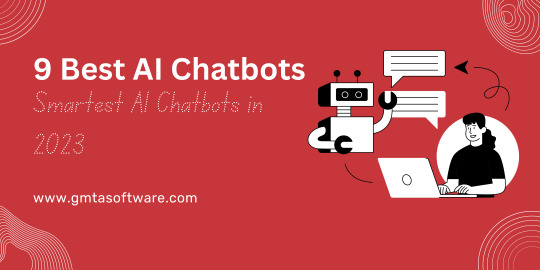
Chatbots have become one of the most important advances in the constantly evolving field of artificial intelligence (AI). These virtual assistants are made to converse with users in natural language and provide customized experiences in a variety of industries. As 2023 approaches, AI chatbots’ capabilities have advanced to new levels, and their use cases are becoming more varied.
The nine most intelligent AI chatbots that are trending in 2023 will be covered in this blog:
1. GPT-4 Chatbot by OpenAI

OpenAI’s GPT-4 stands as a shining example of conversational AI prowess. With improved contextual understanding and human-like responses, GPT-4 has become a cornerstone for numerous applications, ranging from customer support to content creation. Its impressive language generation abilities and nuanced understanding of user queries make it an invaluable tool for businesses and individuals alike.
2. Google’s ChatGPT-X
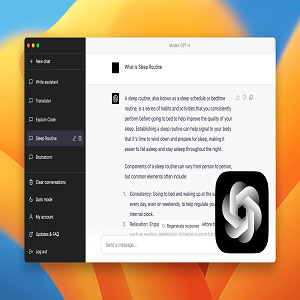
Google has also made significant strides in the AI chatbot domain with ChatGPT-X. This chatbot leverages Google’s vast resources and the power of GPT-3.5, allowing for more coherent and contextually relevant conversations. ChatGPT-X excels in aiding users with information retrieval, task management, and even providing companionship.
3. Amazon’s EchoBot

EchoBot, developed by Amazon, showcases the potential of AI chatbots in the realm of e-commerce. Integrated with Amazon’s shopping platform, EchoBot assists users in product recommendations, order tracking, and seamless shopping experiences. Its ability to understand user preferences and cater to their needs has elevated the online shopping journey.
4. IBM’s Watson Assistant
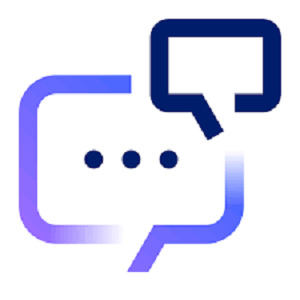
IBM’s Watson Assistant continues to impress with its AI-powered solutions for enterprises. In 2023, it has evolved to offer even more sophisticated natural language processing (NLP) capabilities. Watson Assistant empowers businesses to create tailored virtual assistants that streamline customer interactions, improve support systems, and enhance overall operational efficiency.
5. Microsoft’s Azure Bot Services

Microsoft’s Azure Bot Services has solidified its position as a top choice for businesses seeking AI-driven chatbot solutions. With enhanced language understanding and integration with Microsoft’s ecosystem, Azure Bot Services excels in diverse applications, including internal process automation, customer service, and software troubleshooting.
6. Facebook’s SocialBuddy

Facebook’s SocialBuddy is a testament to the integration of AI chatbots in social media platforms. Designed to facilitate brand-consumer interactions, SocialBuddy assists businesses in managing customer inquiries, feedback, and engagement. Its sentiment analysis capabilities contribute to personalized responses that resonate with users on a deeper level.
7. Siri 2.0 by Apple

Apple’s Siri has been a household name since its inception, and in 2023, Siri 2.0 takes virtual assistance to new heights. With advancements in speech recognition and context-awareness, Siri 2.0 provides users with a more intuitive and seamless experience across their Apple devices. From setting reminders to controlling smart home devices, Siri remains a frontrunner in the AI assistant landscape.
8. Samsung’s Bixby
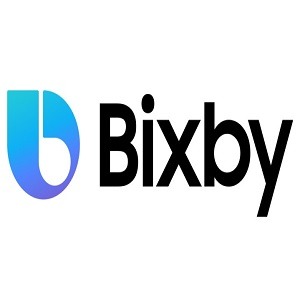
Samsung’s Bixby has matured into a comprehensive AI assistant that caters to users’ daily needs. Its integration with Samsung’s ecosystem empowers users to control devices, manage schedules, and access relevant information effortlessly. Bixby’s multi-modal capabilities, combining voice, text, and touch interactions, offer a well-rounded and user-friendly experience.
9. Salesforce’s ServiceBot
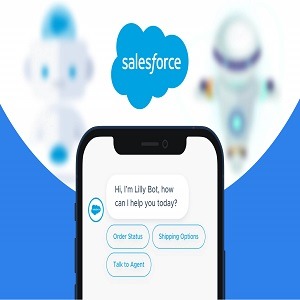
In the realm of customer relationship management (CRM), Salesforce’s ServiceBot shines brightly. Its advanced AI-driven chat capabilities enable businesses to provide exceptional customer support, personalized recommendations, and proactive issue resolution. ServiceBot’s integration with Salesforce’s CRM platform ensures a seamless transition between customer interactions and data management.
The year 2023 has witnessed the chatbot landscape evolving into a realm of boundless possibilities. The nine AI chatbots mentioned above represent a diverse range of applications, from customer support to social interactions, and from e-commerce to enterprise solutions.
These smart AI chatbots are not only changing the way businesses engage with customers but also enhancing individual experiences across various platforms.
As AI continues to advance, we can only expect these chatbots to become even smarter, more intuitive, and more integrated into our daily lives. Whether it’s streamlining business processes or providing personalized recommendations, AI chatbots are undoubtedly here to stay, making our interactions with technology more seamless and human-like than ever before.
1 note
·
View note
Text
What Features Should You Look for in an AI IT Workspace Automation Solution?
In today’s digital-first era, enterprises are increasingly turning to AI-driven IT workspace automation to streamline operations, reduce human error, and drive productivity. As organizations grow more dependent on digital infrastructure, managing IT workflows manually becomes inefficient and error-prone. That’s where AI IT workspace automation solutions come into play.

But with a flood of vendors offering a variety of tools, how do you decide which features matter most? In this article, we’ll break down the essential features to look for when selecting the right automation solution for your IT workspace.
1. Intelligent Workflow Automation
At the core of any AI automation solution lies its ability to automate repetitive tasks—but not all automation is created equal. Look for systems that can intelligently route tasks, make decisions based on data, and learn from patterns over time.
Key capabilities to consider:
Conditional logic (if/then scenarios)
Data-driven task assignment
Auto-resolution of common issues
Scheduled and event-triggered automation
With AI-backed decision-making, your team can spend less time on repetitive chores and more on strategic projects.
2. Natural Language Processing (NLP) Integration
A truly modern AI workspace automation solution must come with NLP capabilities, allowing users to interact with the system using everyday language. This is particularly useful in service desk operations, where employees describe their IT issues in non-technical terms.
Key use cases:
Conversational ticket creation
Intelligent search through historical issues
Chatbots for L1 support
Voice or text-based queries
This dramatically improves the user experience and reduces the burden on your support teams.
3. Self-Healing Capabilities
An advanced AI solution should go beyond detecting issues—it should resolve them autonomously when possible. This concept, known as self-healing IT, enables systems to repair themselves without human intervention.
Look for features such as:
Auto-remediation scripts triggered by alerts
Predictive failure detection (based on logs, metrics, behavior)
Rollback to previous stable states
Automated patch management
The faster your system can recover from anomalies, the less downtime your users will experience.
4. Unified Dashboard and Reporting
A fragmented view of your IT operations can hinder decision-making. Choose a solution that provides a unified dashboard, allowing you to monitor tasks, performance metrics, tickets, automation rules, and user interactions in real-time.
Key reporting capabilities to seek:
Real-time analytics
SLA tracking and compliance
Automation success/failure rate reports
User satisfaction and feedback metrics
Powerful visualization helps both IT and non-technical stakeholders grasp system health at a glance.
5. Seamless Integration with Existing Tools
No tool operates in isolation. Your automation solution should integrate easily with your existing IT infrastructure—including ticketing systems, CRMs, communication platforms, and cloud services.
Examples of integrations:
ServiceNow, Jira, or Zendesk for ticketing
Slack, Teams, or email for communication
Azure, AWS, or GCP for cloud services
Active Directory and other identity management tools
APIs and prebuilt connectors save you time and allow for a smoother transition.
6. Scalability and Flexibility
Your IT needs today may look very different in a year or two. A great automation platform should be scalable to accommodate growth and flexible to adapt to evolving workflows.
Scalability considerations:
Can it handle thousands of users or devices without performance degradation?
Does it support hybrid environments (cloud + on-premise)?
Is it modular so that you can add features as needed?
The ideal solution grows with you, rather than forcing you to switch tools every time your business scales.
7. Security and Compliance
Security is a top priority in any IT system—especially one that has access to sensitive data and can make changes autonomously. Ensure your automation solution adheres to industry security standards and compliance frameworks.
Features to look for:
Role-based access control (RBAC)
Data encryption (in transit and at rest)
Audit trails and logs
Compliance with GDPR, HIPAA, ISO 27001, etc.
Automating tasks shouldn’t come at the cost of exposing your organization to unnecessary risks.
8. AI-Powered Insights and Recommendations
Beyond automating tasks, your solution should be able to analyze historical data and offer actionable insights to improve IT operations. This is where the real value of AI comes into play.
Look for these capabilities:
Root cause analysis suggestions
Recommendations for optimizing workflows
Anomaly detection and alerts
User behavior analytics
Instead of just automating what’s already inefficient, the right system helps you continually refine and optimize your processes.
9. Low-Code or No-Code Interface
A user-friendly interface can significantly reduce the learning curve and broaden the usability of the system. With low-code or no-code builders, even non-technical users can create and manage automation workflows.
This empowers:
IT admins to build workflows without developer assistance
Business users to automate simple tasks (like report generation or data entry)
Faster deployment and iteration of automations
An intuitive interface is key to adoption and long-term success.
10. Support and Community
Lastly, even the best tools can fail if support is lacking. Check whether the vendor offers strong customer support, training resources, and a thriving user community.
Support aspects to evaluate:
24/7 technical support options
Documentation and how-to guides
Community forums or user groups
Onboarding and training programs
A knowledgeable vendor who listens and helps you adapt the solution to your needs is invaluable.
Final Thoughts
Choosing the right AI IT workspace automation solution requires careful evaluation of your current workflows, business goals, and user needs. Features like intelligent workflows, NLP, self-healing systems, and scalable architecture are no longer “nice to have”—they’re essentials in a fast-paced, digital-first environment.
By selecting a solution that not only automates but also adapts, predicts, and enhances your IT operations, you’re investing in a more resilient and future-proof organization.
Remember, the goal isn’t just automation—it’s transformation.
Ready to begin your search? Start with a clear list of your business requirements, prioritize the features outlined above, and ensure your chosen AI IT Workspace Automation Solution is built for today’s challenges—and tomorrow’s opportunities.
0 notes
Text
AI Voice Bot for Business Automation: Turn Client Communications
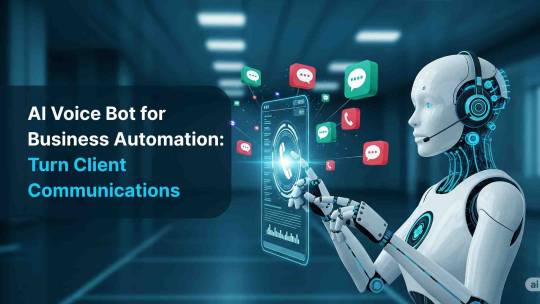
AI voice bot for business automation change how companies communicate with customers today. Businesses need faster response times and better customer service. Traditional phone systems cannot handle the growing demand efficiently. PreCallAI offers a revolutionary solution that transforms phone conversations completely.
Our advanced voice bot technology automates customer interactions naturally. Businesses save time while improving customer satisfaction rates significantly. Manual phone handling creates bottlenecks and missed opportunities daily. PreCallAI eliminates these problems through intelligent conversation automation.
Companies across industries struggle with limited phone capacity. Staff availability restricts business hours and response capabilities. Customer expectations continue rising for instant service delivery. PreCallAI bridges this gap with 24/7 automated phone conversations.
What Makes PreCallAI Different
PreCallAI creates game-changing voice bot solutions for modern businesses. Our technology understands natural language and responds appropriately. Advanced AI algorithms learn from every customer interaction continuously. Speech recognition accuracy exceeds industry standards consistently.
Real-time conversation management handles complex customer requests effectively. Integration capabilities connect with existing business systems seamlessly. Customizable voice personalities match your brand identity perfectly. Multi-language support expands your customer reach globally.
Appointment scheduling happens automatically without human intervention. Lead qualification processes identify high-value prospects efficiently. Customer support automation resolves issues instantly. Sales conversations nurture prospects through personalized interactions.
Advanced Features That Drive Results
PreCallAI voice bots handle multiple conversations simultaneously. Call routing directs customers to the appropriate departments automatically. Sentiment analysis detects customer emotions during conversations. Escalation protocols transfer complex issues to human agents.https://precallai.com/
CRM integration synchronizes customer data across platforms. Analytics dashboards provide detailed conversation insights. Performance metrics track success rates and improvement areas. API access enables custom integrations with specialized software.
Voice recognition works with various accents and speaking styles. Background noise filtering ensures clear communication always. Call recording provides quality assurance and training materials. Backup systems prevent service interruptions during peak times.https://precallai.com/
How AI Voice Bot for Business Automation Transforms Operations
Implementing an AI voice bot for business automation delivers immediate operational improvements. Response times decrease from minutes to seconds consistently. Customer satisfaction scores increase through faster service delivery. Operating costs reduce while service quality improves dramatically.
Staff productivity increases as employees focus on complex tasks. Missed calls become extinct with 24/7 availability. Consistent messaging ensures brand uniformity across interactions. Scalability allows growth without proportional staffing increases.
Revenue generation improves through automated upselling capabilities. Data collection provides valuable customer insights automatically. Lead conversion rates increase with instant follow-up processes. Appointment booking rates improve through immediate scheduling.
Business owners gain complete control over customer communications. Real-time monitoring ensures quality standards are maintained. Customization options adapt to specific industry requirements. Training time is reduced significantly compared to human staff.
Industry-Specific Applications
Healthcare practices benefit from automated appointment scheduling systems. Patient reminders reduce no-show rates significantly. Medical offices handle prescription refill requests efficiently. Dental clinics manage follow-up calls automatically.
Real estate agencies automate lead qualification processes effectively. Property inquiries receive instant responses and information. Showing appointment schedule automatically based on availability. Follow-up calls nurture prospects through sales funnels.
Professional services streamline client intake procedures completely. Legal practices handle initial consultations efficiently. Accounting firms manage client communications during busy seasons. Consulting businesses qualify prospects before human interaction.
E-commerce companies improve customer support capabilities dramatically. Order status inquiries receive instant, accurate responses. Product questions get answered immediately without delays. Return processes initiate automatically through voice commands.
Implementation Process Made Simple
PreCallAI simplifies voice bot implementation for any business size. Initial consultation identifies optimal use cases and strategies. Custom script development reflects unique business requirements perfectly. Integration planning connects systems without disrupting operations.
Testing phases ensure optimal performance before full deployment. Staff training covers system management and monitoring procedures. Quality assurance protocols maintain service standards consistently. Performance optimization continues throughout the implementation process.
Business goals align with technology capabilities through strategic planning. Customer needs receive priority consideration during development. Workflow integration maintains existing processes while adding automation. Change management supports smooth transitions for all stakeholders.
Measuring Success and ROI
Key performance indicators track system effectiveness accurately. Call volume metrics demonstrate capacity improvements clearly. Response time measurements show service delivery enhancements. Conversion rates indicate lead generation success.
Cost savings calculations compare traditional staffing with automation expenses. Customer satisfaction surveys reveal service quality improvements. Revenue attribution demonstrates direct business impact. Productivity metrics quantify staff efficiency gains.
Monthly reports provide comprehensive performance analysis. Trend identification reveals optimization opportunities. Comparative data validates technology investment decisions. Strategic insights guide future expansion planning.
Real Business Benefits
PreCallAI customers experience dramatic operational improvements immediately. Phone capacity increases without additional staff hiring. Customer complaints decrease through faster response times. Sales opportunities multiply through automated follow-up processes.
Administrative tasks are reduced significantly through voice automation. Data entry happens automatically during conversations. Scheduling conflicts resolve through intelligent calendar management. Customer information updates occur in real-time.
Competitive advantages emerge through superior customer service delivery. Market expansion becomes possible with multilingual capabilities. Operating hours extend to 24/7 without staffing complications. Service consistency improves across all customer touchpoints.
Brand reputation is enhanced through reliable customer communications. Customer retention rates increase with improved service quality. Referral generation improves through positive customer experiences. Market differentiation occurs through advanced technology adoption.
Getting Started Today
PreCallAI makes voice bot implementation straightforward and efficient. Free consultations identify specific business needs and opportunities. Custom demonstrations show exact benefits for your operations. Flexible contracts accommodate varying business requirements.
Technical setup happens quickly with minimal business disruption. Training resources help teams maximize system capabilities. Ongoing support addresses questions and optimization needs. Scalability options allow growth without system limitations.
Transform your customer communications with PreCallAI voice bot technology. Experience automated conversations that build relationships and drive results. Contact our team to discover how an AI voice bot for business automation revolutionizes your operations. Schedule your consultation today and start improving customer communications immediately.
Conclusion:-
AI voice bot for business automation revolutionizes customer communications with 24/7 availability, instant responses, and seamless integration. PreCallAI transforms operations by reducing costs, increasing productivity, and improving customer satisfaction. Experience automated conversations that drive results and business growth today.
#AI voice bot for business automation#Customer communications automation#Automated phone conversations#Voice bot technology#Business process automation#Customer service automation#Appointment scheduling automation#Lead qualification automation#24/7 customer support#Natural language processing#Speech recognition technology#CRM integration#Call routing automation#Customer satisfaction improvement#Automated customer interactions#Voice recognition system#Business communication solutions#Automated sales conversations#Customer support chatbot#Real-time conversation management
0 notes
Text
Agentforce CRM vs. Legacy Systems: Why AI-Powered CRM Is the Future of Sales and Support
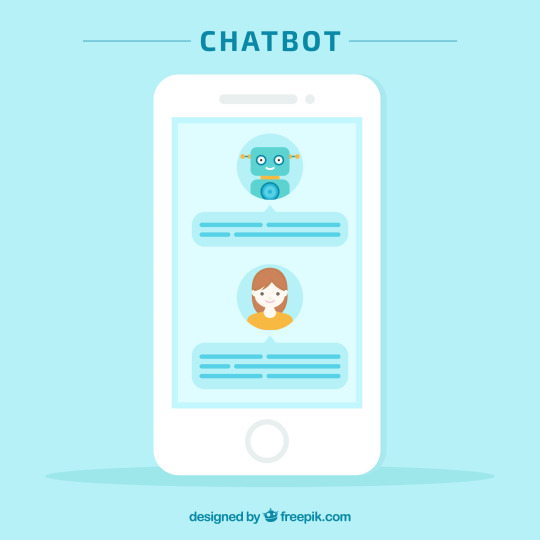
If your team still relies on legacy CRM systems for managing customer relationships, chances are, they’re struggling with slow processes, disconnected channels, and repetitive manual tasks. What worked 10 years ago simply isn’t enough in 2025. That’s why more companies are switching to Agentforce AI CRM software—an advanced solution designed to deliver AI-powered sales automation and AI-driven customer service tools that legacy systems simply can’t match.
Here’s the reality: manual lead scoring and traditional support ticketing slow down business. Agentforce CRM services, powered by Salesforce integration services, eliminate these outdated methods. With intelligent virtual assistants, automated sales workflows, and predictive customer behavior analysis, sales teams can close deals faster, and support agents can resolve issues in real time.
Unlike legacy platforms, Agentforce AI CRM software doesn’t just store data—it actively learns from it. For example, retail businesses can use Salesforce Health Cloud services for customer insights, while finance companies benefit from predictive lead scoring automation built into AI CRM software. Even industries like healthcare and manufacturing now rely on automation for customer service across multiple channels to handle inquiries via chat, email, voice, and social platforms.
The shift is simple: businesses today demand faster service, personalized sales journeys, and smarter systems. GetOnCRM’s Agentforce CRM services help companies make that shift, combining Salesforce Service Cloud services with AI-powered CRM tools that are scalable and future-ready.
If your sales and support teams continue to rely on manual processes and fragmented platforms, it's time to upgrade.
Are you curious about how Agentforce CRM surpasses legacy systems? read the blog.
#agentforce ai crm vs legacy crm systems#ai-powered crm software for sales and support#smarter crm automation with agentforce crm#salesforce integration services for ai crm#best crm automation tools for modern businesses#salesforce health cloud services provider#omnichannel customer service automation crm#predictive lead scoring automation with agentforce#getoncrm agentforce crm services
0 notes
Text
How Chatlayer's Conversational AI Enhances Lead Generation and Sales
Those days are gone when the only human-like conversations we used to have with fellow humans. It is 2025, and we are already in the future that we have always talked about. We have now set foot in a world where we can converse with robots. Now, that's pretty exciting. According to some, there may come a day when Artificial Intelligence (AI) takes over humans entirely. However, today is not that day. Today, let's appreciate the blessing that AI is to humanity and dive deep into the advantages of conversational AI-powered next-gen chatbots. Sinch Chatlayer This is our mission at Sinch. Our latest enhancement comes through the acquisition of Sinch Chatlayer. A cloud-based software platform that lets businesses create chatbots and voice bots in 100+ languages using Artificial Intelligence (AI) and Natural Language Understanding (NLU). Chatlayer provides analytics directly on the platform. Individual bot messages can be fully analysed and Chatlayer's dashboard features allow administrators to inspect the overall health of a particular bot. Chatlayer SaaS platform easily integrates with all major CRM, ticketing systems, knowledge base, and contact center solutions through our API. AI-based chatbot Artificial intelligence or AI-based chatbots are apps or interfaces that can carry on a human-like conversation using natural language understanding (NLU) or natural language processing (NLP) and machine learning. AI chatbots differ from standard chatbots because they leverage large language models (LLMs) versus traditional conversation flows and pre-programmed responses to generate responses to text and voice inputs. AI chatbots can improve customer experiences with virtual agents trained on a business's content and data, lower costs, and scale customer support. AI chatbot integration AI chatbot integration gives you instant AI-powered support, and Live chat adds the expertise of human agents, ensuring that every customer interaction is efficient and effective. Your customers can reach out to an AI chatbot anytime and get an instant response. Live agents will deliver a personalized experience when needed. Create a custom self-learning AI model based on your existing business data. Answer even the most complex queries with immediate responses using generative AI.
2 notes
·
View notes
Text
AI Voice Bot Development in 2025: What CTOs, Startups, and Enterprises Must Know Now
In 2025, AI voice bot development has emerged as a critical driver of innovation, scalability, and customer engagement across industries. From intelligent customer support to voice-driven commerce, AI-powered voice bots are rapidly becoming a cornerstone of enterprise digital strategies.
What was once considered futuristic is now fundamental—voice is the new interface, and businesses that fail to embrace it risk falling behind. As the technology matures, CTOs, startups, and large enterprises must rethink their approach to voice-enabled automation.
This blog explores what key decision-makers need to understand in 2025 about AI voice bot development, including the latest trends, essential technologies, strategic considerations, and deployment best practices.
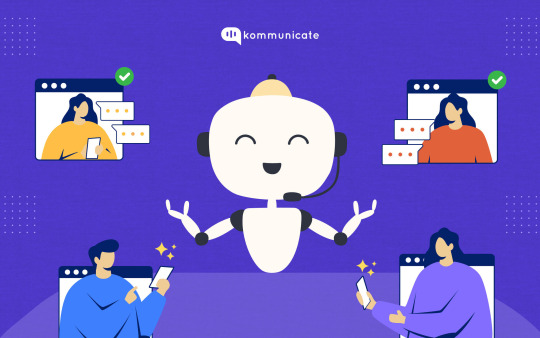
🚀 Why Voice Bots Are No Longer Optional in 2025
The shift toward voice-first interactions is no longer a trend—it’s a global movement. With consumers using smart speakers, smartphones, and in-car assistants daily, voice-based engagement has become both expected and preferred.
According to recent industry data:
Over 65% of customers prefer voice over typing for customer service
70% of enterprises have either deployed or are actively investing in voice bots
Voice commerce is expected to exceed $80 billion globally by year-end
In 2025, AI voice bots are used not just in customer service, but also in HR, healthcare, finance, logistics, and even legal services—delivering natural, real-time conversations at scale.
🎯 What CTOs Must Know About AI Voice Bot Strategy
For Chief Technology Officers, AI voice bots offer both opportunity and complexity. Success depends on strategic alignment with the broader digital vision.
1. Voice as a Strategic Business Layer
Voice is not just a feature—it must be treated as a core channel. Integrate voice into your product roadmap, customer experience stack, and omnichannel architecture.
2. Scalability and Integration Are Critical
Choose platforms that offer easy integration with your existing CRM, data systems, and backend services (e.g., Salesforce, Zendesk, SAP). Your architecture should support API-first development and cloud scalability.
3. Security & Compliance Are Non-Negotiable
Voice bots must comply with GDPR, HIPAA, PCI DSS, and other regulations, depending on your industry. Implement voice biometrics, encryption, and role-based access to protect sensitive user data.
4. Cross-Platform Compatibility
Ensure your bot works seamlessly across devices—smartphones, IVR systems, smart speakers, and web apps. Users expect a consistent voice experience.
🧠 What Startups Must Know to Compete
AI voice bots are not just for enterprise giants. Startups are uniquely positioned to innovate rapidly and deploy voice-first solutions that disrupt traditional industries.
1. Leverage Open-Source and Cloud Tools
Startups can use platforms like Rasa, Dialogflow CX, and Amazon Lex to build powerful voice bots without heavy upfront investment. Combine with OpenAI’s Whisper and GPT-4 APIs for smarter NLP.
2. Prioritize Use Case Focus
Don’t try to build a bot that does everything. Focus on one specific pain point (e.g., appointment booking, order tracking, lead qualification) and build deep functionality around it.
3. UX Is Your Differentiator
Human-like interaction design, clear conversational flows, and empathetic voice responses can set your product apart. Use tools like Voiceflow to prototype and iterate fast.
4. Offer Voice as a SaaS or API
If you’re building a product, consider offering voice bot capabilities as a service. Startups like Talkdesk and PolyAI gained traction by packaging their voice solutions for easy enterprise integration.
🏢 What Enterprises Must Know to Scale Voice Successfully
Enterprises must move beyond pilots and proof-of-concepts. 2025 is the year to operationalize and scale voice across business units.
1. Voice Bots Must Be Omnichannel
Your voice bot should provide a seamless experience across web, mobile apps, smart devices, and call centers. Use platforms that support multi-channel deployment with centralized management.
2. Invest in Emotional Intelligence
Voice bots should be able to detect tone, stress, or urgency. Emotion AI is essential for delivering empathetic experiences and improving escalation logic.
3. Use Conversational Data to Drive CX
Analyze voice interaction logs to uncover user intent, identify pain points, and improve services. Platforms like Dashbot and Google Cloud Contact Center AI offer rich analytics dashboards.
4. Train on Industry-Specific Language
Generic bots often fail in niche domains. Train your voice models using real-world industry data (anonymized) for accurate understanding of jargon, compliance terms, and use case flows.
🔧 Key Technologies Powering AI Voice Bots in 2025
AI voice bots rely on a stack of sophisticated technologies that work together to deliver fluid, intelligent conversations:
🔹 Automatic Speech Recognition (ASR)
Converts spoken input into text. Leading tools:
Google Cloud Speech-to-Text
Amazon Transcribe
OpenAI Whisper
🔹 Natural Language Understanding (NLU)
Identifies user intent, extracts entities, and manages context. Popular engines:
Dialogflow CX
Rasa NLU
GPT-4 via OpenAI API
🔹 Text-to-Speech (TTS)
Speaks responses in a natural, emotionally expressive voice. Tools include:
Amazon Polly
Google Cloud TTS
WellSaid Labs for custom brand voices
🔹 Emotion AI
Analyzes tone, pitch, and pace to determine the speaker’s emotional state, improving bot response and user satisfaction.
✅ Best Practices for Successful Voice Bot Development
Whether you’re a CTO, founder, or product manager, follow these best practices to ensure a successful AI voice bot project:
1. Start With a Strong Use Case
Identify a high-impact problem your voice bot can solve—preferably where speed and availability are critical (e.g., support, scheduling, or real-time notifications).
2. Design for Natural Dialogues
Use conversation designers to craft realistic flows. Support interruptions, clarifications, and multi-turn exchanges that feel human.
3. Implement Clear Escalation Paths
Ensure the bot can transfer the user to a human agent when it reaches a dead end or detects user frustration.
4. Monitor and Continuously Improve
Analyze usage data to refine NLP models, update flows, and expand features. Use A/B testing to experiment with tone, phrasing, and personalization.
5. Focus on Accessibility
Design your voice bot to be inclusive—support different accents, languages, and speech patterns. Include voice-first support for visually impaired users.
📊 Key KPIs to Track Post-Deployment
Once deployed, measure your voice bot’s performance using these metrics:
Intent recognition accuracy
Average resolution time
Task completion rate
Call deflection rate
CSAT (Customer Satisfaction Score)
Escalation to human agent rate
Retention and repeat usage
Optimizing these KPIs ensures your voice bot adds measurable business value.
🔮 What the Future Holds for Voice Bots
AI voice bots are evolving rapidly. Here’s what to expect beyond 2025:
➤ Voice Biometric Authentication
Users will securely log in or verify identity using their voiceprint—no passwords needed.
➤ Voice in AR/VR and Metaverse
As virtual environments rise, voice will be the default interface for navigating, interacting, and transacting in 3D spaces.
➤ Proactive Voice Assistants
Voice bots will initiate conversations based on user behavior, lifecycle events, or predictive needs—like a virtual concierge or assistant.
➤ Industry-Specific LLMs for Voice
Sector-trained language models will power voice bots with hyper-specialized vocabulary and contextual awareness, improving performance in fields like legal, finance, or healthcare.
🧩 Final Thoughts: Voice is the Interface of the Future
AI voice bot development in 2025 is about more than automation—it’s about creating natural, intuitive, and intelligent experiences that align with how people live, work, and communicate.
0 notes
Text
Call Center Software company in Dubai
In a city like Dubai—known for its rapid growth, global business presence, and high service standards—companies must invest in smart communication systems to stay competitive. Whether you’re in healthcare, real estate, travel, banking, or e-commerce, customer interaction plays a vital role in brand trust and retention. That’s why choosing the right call center software company in Dubai is more than a tech decision—it's a strategic one.
At Aria Telecom, we provide advanced, scalable, and fully customizable call center software designed to streamline customer service, sales, support, and outbound engagement. As a leading player in Dubai’s tech ecosystem, we combine innovative telecom solutions with local expertise to help businesses deliver exceptional service and drive operational efficiency.
Why Dubai Businesses Need Intelligent Call Center Solutions
With a diverse and demanding customer base, Dubai businesses can’t afford delays, missed calls, or outdated systems. Manual logging, disorganized call queues, or lack of performance tracking results in missed revenue and unhappy customers.
Aria Telecom, as a top-tier call center software company in Dubai, addresses these challenges with:
Cloud-based and on-premise call center systems
AI-powered auto dialers and IVR
CRM and ticketing integrations
Real-time monitoring and analytics
Multilingual capabilities (English, Arabic, Hindi, etc.)
Our technology empowers businesses to answer more calls, close more deals, and support more customers with fewer resources—all while maintaining quality and compliance.
Core Features of Aria Telecom’s Call Center Software
✅ Omnichannel Support Handle voice, WhatsApp, chat, SMS, and email from one unified platform.
✅ Smart IVR & Call Routing Direct calls to the right department or agent instantly based on inputs, time, or priority.
✅ Auto Dialers (Predictive/Progressive/Preview) Boost agent efficiency for outbound calls like telemarketing, follow-ups, and collections.
✅ Live Call Monitoring & Call Recording Listen in on live calls, review recordings, and train agents for better quality assurance.
✅ Custom CRM Integration Seamlessly connect with Salesforce, Zoho, HubSpot, and custom CRM systems to streamline workflows.
✅ Data Privacy & Security We adhere to UAE compliance standards, including secure data encryption and role-based access control.
Whether you're a 5-agent startup or a 500-seat contact center, Aria Telecom builds solutions that scale as your business grows.
Why Aria Telecom Is a Trusted Name in Dubai
As a leading call center software company in Dubai, Aria Telecom is known for more than just feature-rich tools—we’re known for long-term partnerships, robust support, and industry expertise.
Here's why businesses trust us:
✅ Over a Decade of Experience in telecom and contact center technology
✅ UAE-Based Support for fast implementation and localized service
✅ Customization First – solutions built around your business model
✅ High Uptime Cloud Infrastructure hosted in UAE/GCC-based data centers
✅ Affordable Pricing with no hidden charges or long-term lock-ins
From initial consultation to deployment and beyond, we walk with you every step of the way.
Who We Serve
Aria Telecom supports a wide range of industries in Dubai and across the UAE:
🏥 Healthcare – Manage appointment calls, patient inquiries, and reminders
🏨 Hospitality & Travel – Handle booking calls, feedback, and concierge services
🛒 E-commerce & Delivery – Support customers with orders, returns, and real-time updates
🏢 Real Estate – Manage leads, schedule property visits, and follow-up calls
🏦 Financial Services – Improve collections, customer verification, and loan queries
Whether it's inbound support or outbound campaigns, our clients report up to:
50% fewer missed calls
35% improved agent performance
60% more customer satisfaction
#CallCenterSoftwareDubai#AriaTelecomUAE#CustomerSupportSolutions#ContactCenterTech#BusinessAutomationDubai
0 notes
Text
7 Innovative AI Agent Development Companies Transforming Customer Engagement
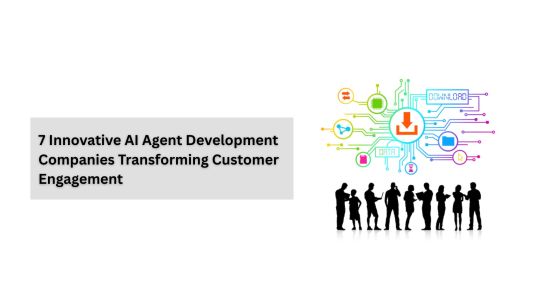
In an era where customer expectations are higher than ever, businesses are actively adopting AI-powered solutions to stay competitive. One of the fastest-growing trends in this space is the use of AI Agents — intelligent, automated systems capable of managing customer interactions, sales processes, and operational tasks with human-like efficiency. Increasingly, enterprises are partnering with an experienced AI Agent Development Company to design AI-driven customer engagement platforms that operate 24/7, deliver real-time insights, and improve service outcomes.
AI Agents are transforming the way companies interact with their audiences — offering personalized experiences, resolving queries faster, and handling complex tasks without human intervention. Here’s a look at seven forward-thinking companies leading the way in AI Agent development and redefining modern customer engagement.
1. AIVeda
AIVeda is making significant strides in enterprise AI solutions, particularly in the domain of AI Agent development. Known for creating intelligent, adaptive AI Agents, AIVeda focuses on building systems that automate customer support, streamline lead management, and offer data-driven insights for businesses across fintech, healthcare, and retail sectors. Their AI Agents can handle customer inquiries, appointment scheduling, and operational processes around the clock, ensuring businesses stay responsive while reducing operational costs. With continuous learning models, these agents evolve over time, improving both accuracy and engagement.
2. Devox Software
Devox Software has built a reputation for delivering reliable, scalable AI solutions tailored for enterprise clients. Their AI Agent services help businesses automate customer service, lead qualification, and internal workflow processes. Devox Software’s AI Agents are designed for real-time responsiveness and multi-channel engagement, making them suitable for industries such as fintech, e-commerce, and customer support operations.
3. LeewayHertz
A leader in AI and emerging technologies, LeewayHertz builds sophisticated AI Agents capable of seamless integration with enterprise platforms. Their AI Agents support multi-channel interactions, enabling businesses to automate customer support, financial transactions, and operational workflows. The company’s focus on context-aware, intelligent systems has made them a preferred technology partner for scalable AI solutions.
4. Markovate
Markovate delivers AI-powered applications for enterprises, with a focus on developing AI Agents for customer service, sales, and backend operations. Their AI Agents enhance customer engagement by providing personalized recommendations, proactive query handling, and real-time assistance. Markovate’s custom solutions are designed for scalability and ease of integration with existing business systems.
5. TechMagic
TechMagic combines cloud development expertise with AI integration services, offering businesses AI Agents for customer support, ticket automation, and intelligent recommendations. Their AI-powered agents are designed for flexibility, allowing businesses of all sizes to implement cost-effective, scalable virtual assistants tailored to their operational needs.
6. Signity Solutions
Signity Solutions focuses on AI-driven enterprise solutions, including AI Agent development for industries like fintech, healthcare, and e-commerce. Their AI Agents manage customer interactions via chat, email, and voice, handling appointment scheduling, order management, and product recommendations. Seamless integration with CRM and ERP platforms ensures streamlined workflows and enhanced customer experiences.
7. Imaginovation
Imaginovation delivers AI solutions that include intelligent AI Agents for customer service automation, lead nurturing, and sales process optimization. By leveraging machine learning and natural language processing (NLP), their AI Agents provide context-aware, personalized customer interactions, enhancing operational efficiency and improving customer loyalty.
Final Thoughts
The growing demand for AI-driven customer engagement has positioned AI Agents at the forefront of business transformation. These seven companies are leading the charge in AI Agent development, offering scalable, efficient, and intelligent solutions for modern enterprises. Partnering with a capable AI Agent Development Company is becoming essential for businesses seeking to automate operations, improve customer satisfaction, and maintain a competitive edge in a digital-first market.
As AI Agents continue to evolve, these companies provide a valuable roadmap for enterprises looking to future-proof their customer engagement strategies.
0 notes
Text
AI Millionaire in 6 Months? These 8 Business Ideas Say Yes
AI isn’t just a trend — it’s an engine for income.
Forget what you’ve been told about needing investors, massive teams, or years of grind to build a profitable business. The rules have changed. With the right AI-powered development idea, a laptop, and a strong strategy, you can build a lean business that’s scalable, automated, and insanely profitable in under six months.
We’re seeing creators, solopreneurs, and founders hit $10k, $50k, even $100k MRR by solving niche problems with AI — fast.
Let’s break down high-potential, low-barrier AI business ideas that can genuinely get you to millionaire status sooner than you think.
1. AI-Powered Agency-as-a-Service
What You Do: Use AI to deliver services like content writing, lead generation, customer support, or even data analysis — but position it as a full-service agency.
Example: Offer LinkedIn content creation packages using ChatGPT + Canva + scheduling tools. Sell monthly retainers to founders or personal brands.
Why It Works:
Clients don’t care how you deliver, just that it works.
You can scale output without scaling team size.
Monetization: $1k–$5k per client/month. You can scale to 10+ clients solo using automation.
2. Micro-SaaS Tools Built With AI APIs
What You Do: Build small, focused tools using ChatGPT, Claude, or Gemini APIs — like a blog title generator, pitch deck analyzer, or startup name generator.
Example: Launch a tool that writes optimized product descriptions for Shopify stores.
Why It Works:
AI APIs do the heavy lifting.
You don’t need to be a developer — tools like Bubble, Softr, and Glide get you going fast.
Monetization: Monthly subscription ($9–$199), or lifetime deals on platforms like AppSumo.
3. Prompt Marketplaces and Template Stores
What You Do: Sell optimized prompts or custom AI workflows to specific industries — HR, eCommerce, real estate, etc.
Example: “50 Prompts to Scale Instagram Engagement Using ChatGPT” as a Gumroad product.
Why It Works:
Prompts are digital assets. Build once, sell forever.
High margins and almost zero fulfillment cost.
Monetization: Direct sales ($5–$99/prompt pack), upsell courses or memberships.
4. Faceless AI Content Channels
What You Do: Use AI voices, avatars, and scripts to run faceless YouTube or Instagram channels.
Example: A YouTube Shorts channel explaining AI tools using HeyGen + ElevenLabs + Opus Clip.
Why It Works:
AI handles content creation, editing, and posting.
You can run 3–5 channels at once.
Monetization: Ad revenue, affiliate links, digital product sales, or brand partnerships.
5. AI-Powered Online Course Empire
What You Do: Use AI to plan, write, and build courses fast — then sell them on platforms like Teachable, Podia, or your own site.
Example: “Learn Prompt Engineering for Marketing Teams” — scripted by ChatGPT, narrated with ElevenLabs.
Why It Works:
Zero need for you to be on camera.
AI allows for rapid prototyping and iteration.
Monetization: $49–$499/course. Bonus: offer community access or 1-on-1 coaching for extra cash flow.
6. B2B Automation Consulting Using AI
What You Do: Set up automations and GPT integrations for businesses — like chatbots, outreach sequences, CRM triggers, or lead filters.
Example: Build and sell an AI-based lead qualification system for real estate agencies.
Why It Works:
Businesses need AI, but don’t know where to start.
You build it once, charge monthly for maintenance/support.
Monetization: One-time setup fees + monthly retainers ($500–$5000/client).
7. AI-Enhanced Resume & LinkedIn Optimization Studio
What You Do: Combine ChatGPT + Canva to optimize resumes, bios, cover letters, and personal branding.
Example: $199 packages with 48-hour delivery, plus upsell options for mock interviews and AI-generated portfolio websites.
Why It Works:
Job seekers will pay for visibility and speed.
Templates can be reused across clients.
Monetization: Tiered packages ($99–$499), or $29/month subscription for ongoing tweaks and updates.
8. Launch a Micro-Certification AI Academy
What You Do: Offer short, skill-specific AI certifications — like “Prompt Engineering for HR,” “AI Copywriting Basics,” or “No-Code AI Apps for Startups.”
Example: Use tools like Typeform + ChatGPT + Zapier to deliver lessons, quizzes, and certificates.
Why It Works:
People want job-proof, proof-of-skill credentials.
Businesses are adopting AI and need to upskill fast.
Monetization: One-time purchases or B2B licenses for teams. ($49–$199 per certification)
Real People. Real Revenue. Real Fast.
These aren’t just ideas. They’re already happening:
A solo creator on Gumroad made $70k in under 3 months selling prompt bundles.
An AI content creator hit $120k in ad revenue running 3 faceless YouTube channels in just 6 months.
One micro-SaaS built with ChatGPT for Amazon sellers hit $20k MRR within 4 months of launch — no code, no VC funding.
A freelancer turned AI resume optimizer now charges $1,200+ for packages that take 90 minutes to fulfill with GPT.
You don’t need a team. You don’t need funding. You just need a problem, a clear outcome, and a bit of smart tooling.
So, What’s Holding You Back?
Let’s be honest: most people don’t fail because of bad ideas. They fail because they try to build the next “big thing” instead of solving one valuable problem for one specific group.
Here’s your 3-step playbook:
Pick your target: Real estate agents, startup founders, Shopify brands, job seekers, etc.
Find the friction: Slow content, no leads, confusing workflows, etc.
Build the fix with AI: Use the tools at your fingertips — GPT, Midjourney, Zapier, Bubble.
Get your first version out fast. Charge money. Iterate. Then scale.
Final Word: AI Isn't Just the Tool — It's the Business
This is your window.
Right now, AI is the single biggest leverage tool in entrepreneurship. It writes, designs, automates, sells, pitches, edits, and scales. The people who treat it as a cofounder — not just a tool — are the ones building cash-flowing machines from home.
Whether you're aiming for $10k/month or $1M in revenue, these AI business models are real, repeatable, and already generating results.
Don’t wait to get disrupted. Be the one doing the disrupting.
Want to Build Your AI Business With a Trusted Partner?
Oyelabs helps founders, creators, and entrepreneurs:
Launch scalable AI startups
Build micro-SaaS tools and marketplaces
Validate and grow fast without wasting time Let’s take your idea from napkin to revenue.
0 notes